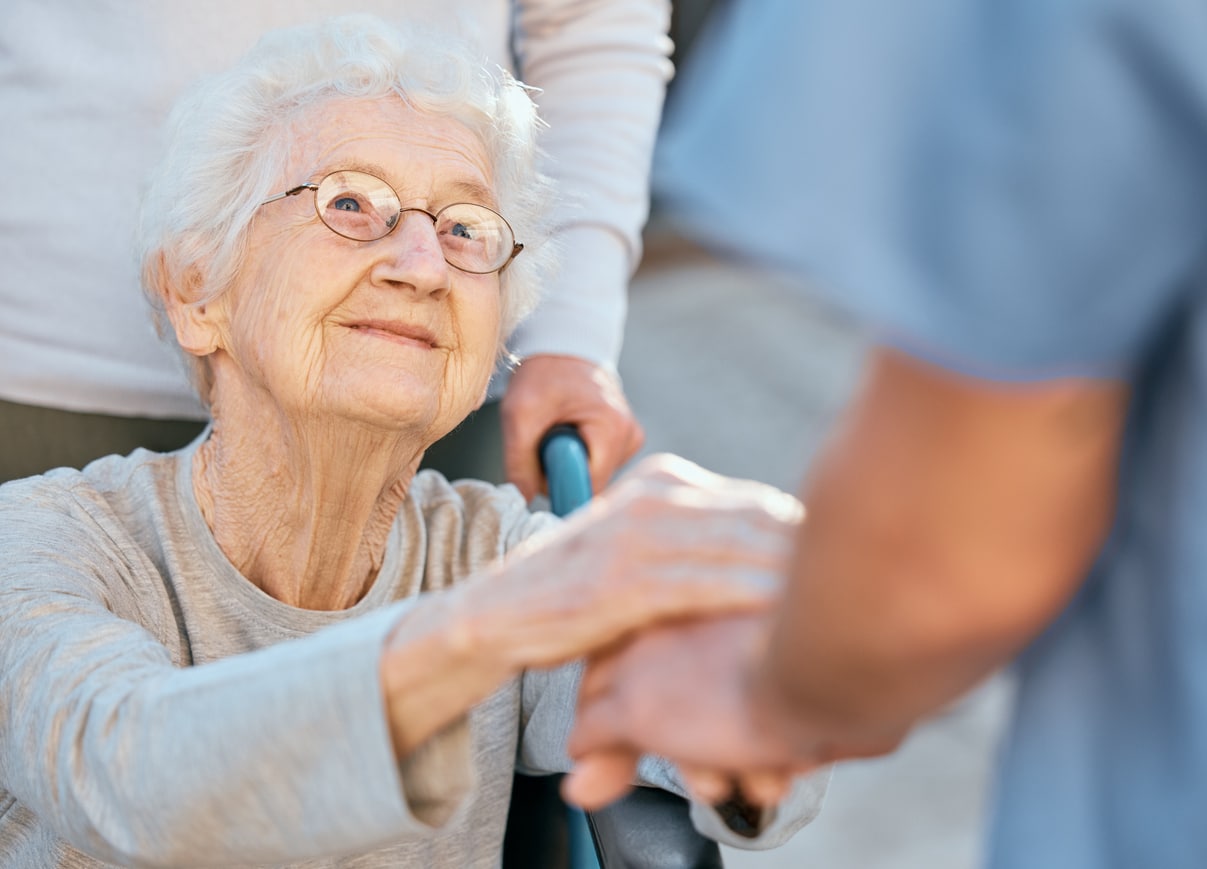Assisted living is an option that many seniors feel isn’t right for them. But as time goes by and life at home becomes less and less manageable, assisted living can be the perfect solution. Take a look at the reasons that signal it might be the right time to move to assisted living.
Accessibility problems
Typical homes are made for families, not for aging in place. Using a walker or wheelchair can be difficult, if not impossible, and simple tasks like getting up and down stairs and bathing can become dangerous. While many seniors consider making renovations — widening doorways, adding walk-in showers, and installing a chairlift — the costs are often significant.
As explained in the money.usnews.com article, “How Much Should You Spend on Aging in Place Renovations? Retirees Weigh In,” while simple changes like adding shower grab bars and lever handles to faucets and doors are fairly inexpensive, larger renovations throughout a home can range from a few thousand dollars to well over $100,000, depending upon the types and extent of changes needed. For a look at other possibilities, check out our blog, “Home Safety for Older Adults: A Checklist of Top Considerations.”
Ongoing care needs
Perhaps the most common reason that seniors move to assisted living is declining mental and/or physical health and the subsequent increased care needed. Even healthy seniors may need more help as they age, as everyday life becomes more challenging. For those who suffer an illness or injury the need for care may snowball until families find they can no longer keep up. The result can be caregiver burnout, which, as noted in the my.clevelandclinic.org article, “Caregiver Burnout,” can cause anxiety and depression and may even impact the physical health of a loved one.
In assisted living, however, seniors get all the help they need from qualified professionals who take the time to know and understand each resident’s needs and desires. From simple help dressing and bathing to medication management, assisted living takes the burden off families and replaces it with peace of mind.
Loss of independence
Many seniors equate living at home with independence, when in reality, home can quickly become a prison. For example, when it’s time to give up driving, it becomes difficult to get out and socialize with friends and take care of tasks like shopping and doctor’s appointments without being a burden on others. Health problems can also limit a senior’s ability to remain independent, especially when living at home alone. The result is not only a loss of independence but often loneliness and feelings of isolation.
According to the health.usnews.com article, “Loneliness in Older Adults: Challenges and Remedies,” the 2023 National Poll on Healthy Aging found that 34% of seniors felt isolated and 37% lacked companionship. The resulting mental and physical health risks can include:
- Anxiety
- Depression
- Heart Disease
- Hypertension
- Dementia
To better understand the danger, the article notes that the increased risk of premature death from lack of social connections is similar to that of smoking every day.
Nutrition
Another excellent reason to move to assisted living is nutrition, or in many cases, malnutrition. According to a 2023 study noted in the health.harvard.edu article, “Malnutrition in older adults: Strategies for addressing this common problem,” age-related changes can put seniors at risk for malnutrition, which, while it may not be easy to spot, is not uncommon in the elderly.
Among the reasons for poor nutrition are:
- Problems swallowing and/or chewing.
- Problems with teeth or gums.
- Declining sense of taste and/or smell.
- Cognitive conditions like dementia or Alzheimer’s disease.
- Inability to shop and prepare healthy meals.
- Depression
Another angle on nutrition is the changing nutritional needs of seniors. Aging brings about loss of muscle mass, slows the metabolism of calories, and can inhibit the absorption of certain nutrients. As a result, seniors require more protein, fewer calories, and a diet rich in foods with high nutrient content. Seniors also benefit from increased fiber consumption and may be at risk of dehydration due to a decline in the sensation of thirst.
In assisted living, meal time is not only a time to refuel but also an opportunity to enjoy the company of friends, something that always makes eating more fun. Top assisted living communities like Ganton’s Countryside offer chef-inspired meals made with fresh, wholesome ingredients with seniors in mind, including those on special or restricted diets.
There are many reasons seniors choose to move to assisted living at Ganton’s Countryside and many often wonder why they waited so long. For more information about Countryside, please call Margaret Nagel at (517) 206-5000 or download our brochure to learn about our care levels, cost, and amenities.


